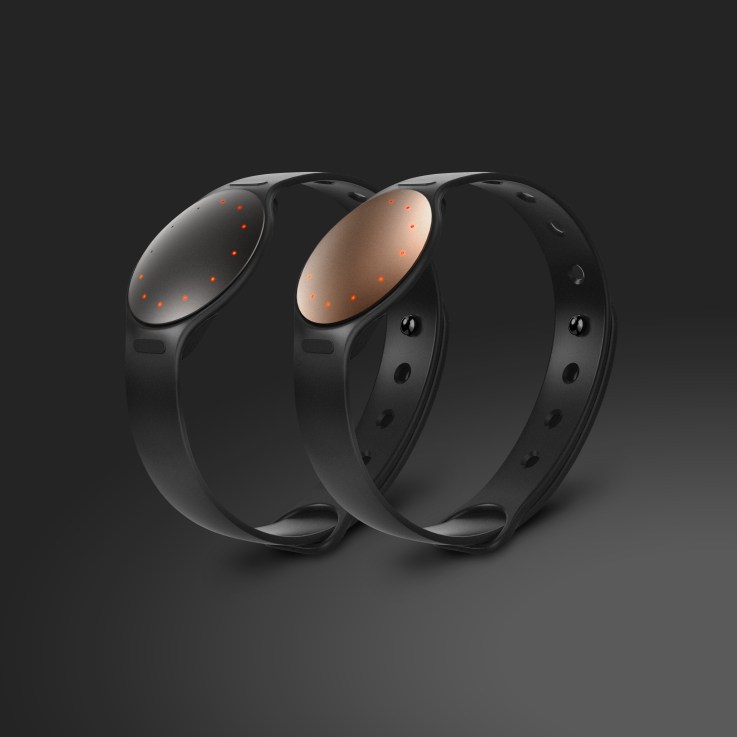
Over two years ago, Misfit launched an activity monitor called “Shine,” which was among the first breakout successes in the wearable space, offering an attractive alternative to competitors’ then more plastic-looking fitness trackers. In the years since, the company has expanded its product line to include a range of connected devices, including also sleep monitors and connected lightbulbs. Today, Misfit is announcing its newest device, an updated, more powerful version of its flagship wearable, the Shine 2.
The new device, both a fitness and sleep monitor, features an updated design, a number of new sensors allowing for additional data collection, and improved touch responsiveness. However, despite the changes, the Shine 2 claims to still have a 6-month battery life like its predecessor, and will cost $99.99.
SPECS:
- 12 LED lights, capable of displaying over 16 million potential colors
- Vibration motor
- 3-axis accelerometer
- 3-axis magnetometer
- Capacitive sensor
- Bluetooth 4.1
- Dimensions: 8 mm, 3.3 mm at its edge
- Up to 6-month battery life (in reality, probably more like 4-6 months)
- Coin cell, user-replaceable battery
- Water resistance up to 50m
- 2 colors (rose gold, carbon black)
- Modular, aluminum body
- Accessories that come with: sport band, clasp and action clip
The most notable change, from a purely visual perspective, is that the Shine 2 is a bit larger in diameter, but thinner than before. However, the new dimensions mean that current Shine users won’t be able to use their old Shine accessories with the new device if they upgrade. Instead, the Shine 2 ships with a sport band, a clasp and an action clip.
This latter item is something Misfit came up with to better secure the device, so it wasn’t as easy to lose.

As a prior Shine owner, I can attest to this problem – thanks to the Shine’s magnet, and its tendency to pop out of its band, I lost a couple of Shines previously. One, lost in the airport security line, was never found; while another was stuck on the inside of a car door for weeks before being discovered. The Shine 2 no longer has a strong magnet, and along with the action clip, it seems it will be easier to keep up with the new device.
Beyond the aesthetics, the internals of the Shine have been updated as well. The device has a more powerful processor, which offers more computational power, allowing the Shine 2 to add new features like 12 multicolored LED lights and a vibration motor.
In addition, the Shine 2 includes a 3-axis magnetometer, which measures rotational movements. This will allow for more accurate activity and sleep tracking, the company notes. In the future, it will also enable different types of activity tracking features as well.

The Shine 2 also has a 3-axis accelerometer, 50-meter water resistance, and improved touch responsiveness thanks to its capacitive sensor. The company says it has also improved its tap detection algorithms quite a bit – something that could address some of the troubles original Shine owners had with their devices. You would sometimes have to tap with a fair amount of force in order for the wearable to register your touch, but now the Shine 2 will be far more responsive, even with lighter touches, the company claims. (Devices were not available for testing, we should note.)
Beyond just tracking fitness and sleep, the Shine 2 lets you get text and call notifications and it can nudge you to move with a vibration (“Misfit Move”, it’s called) – things that the Apple Watch does as well, though with a colorful screen that displays more information versus Shine 2’s colored lights and vibrations.
And like Misfit’s entry-level wearable Flash Link, the Shine 2 now works with the Misfit Link app. This turns your device into a remote control of sorts, allowing you to tap to do things like change your music, snap a selfie, advance a slideshow presentation, operate smart home devices, and more. (You can activate these functions via a triple tap.)
The Shine 2 is available for $99.99 and comes in just two colors, Rose Gold and Carbon Black. For now, consumers can buy it online via the misfit.com website, but it will hit retail stores in November.
The Shine 1 will continue to be available, but will be less expensive at $69.99.
Now with a host of devices at varying price points, Misfit has the potential to carve out a niche for itself as a lower-cost alternative to pricier smartwatches, including Apple’s, by offering the basic functionality they do, including activity tracking, alert notifications, and more. Of course, an aluminum tracker isn’t nearly as functional as watch, but for $100 all the way down to just $20 for the Link, Misfit offers a range of decent alternatives for those who want to test the waters with wearables.

Comments
Post a Comment